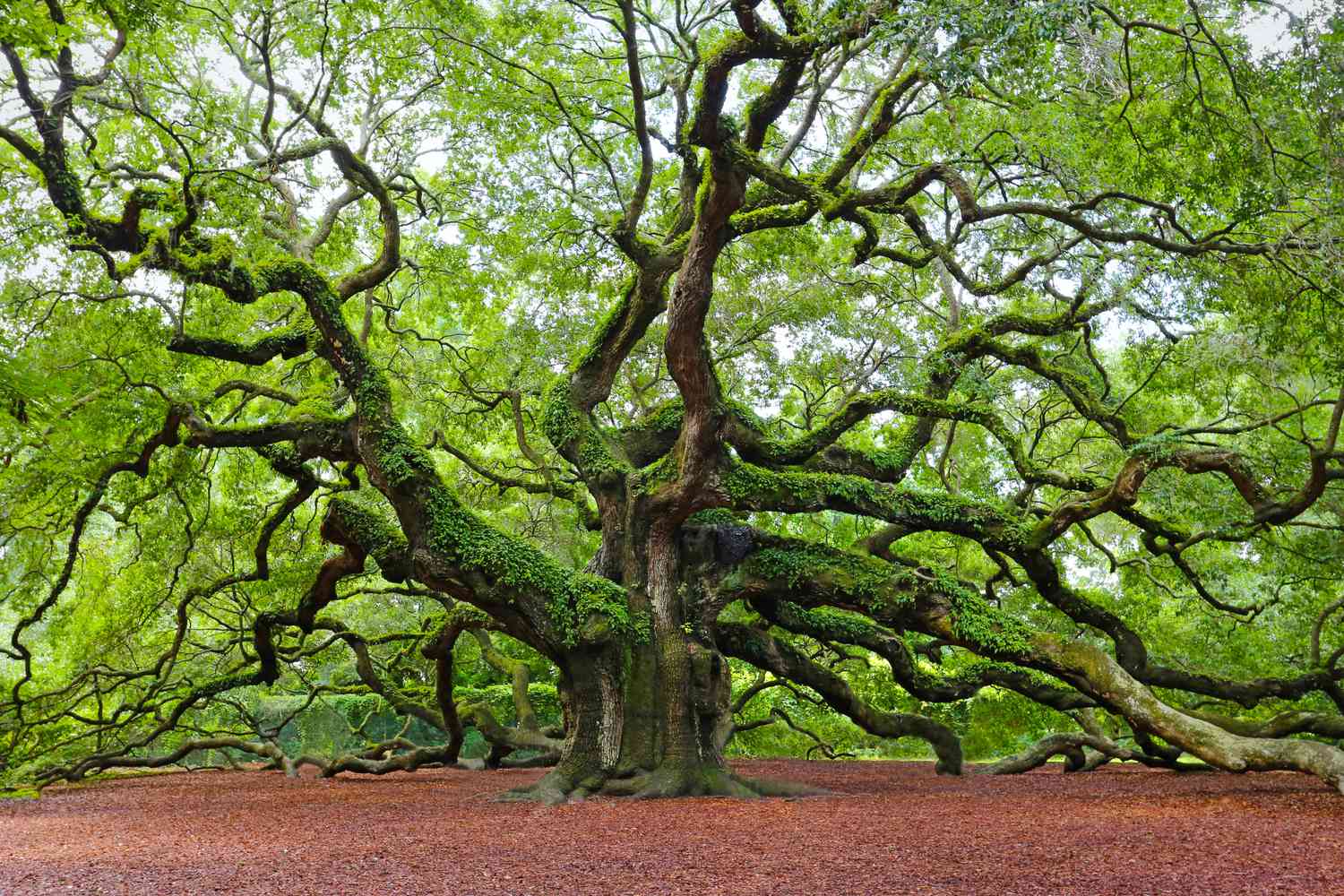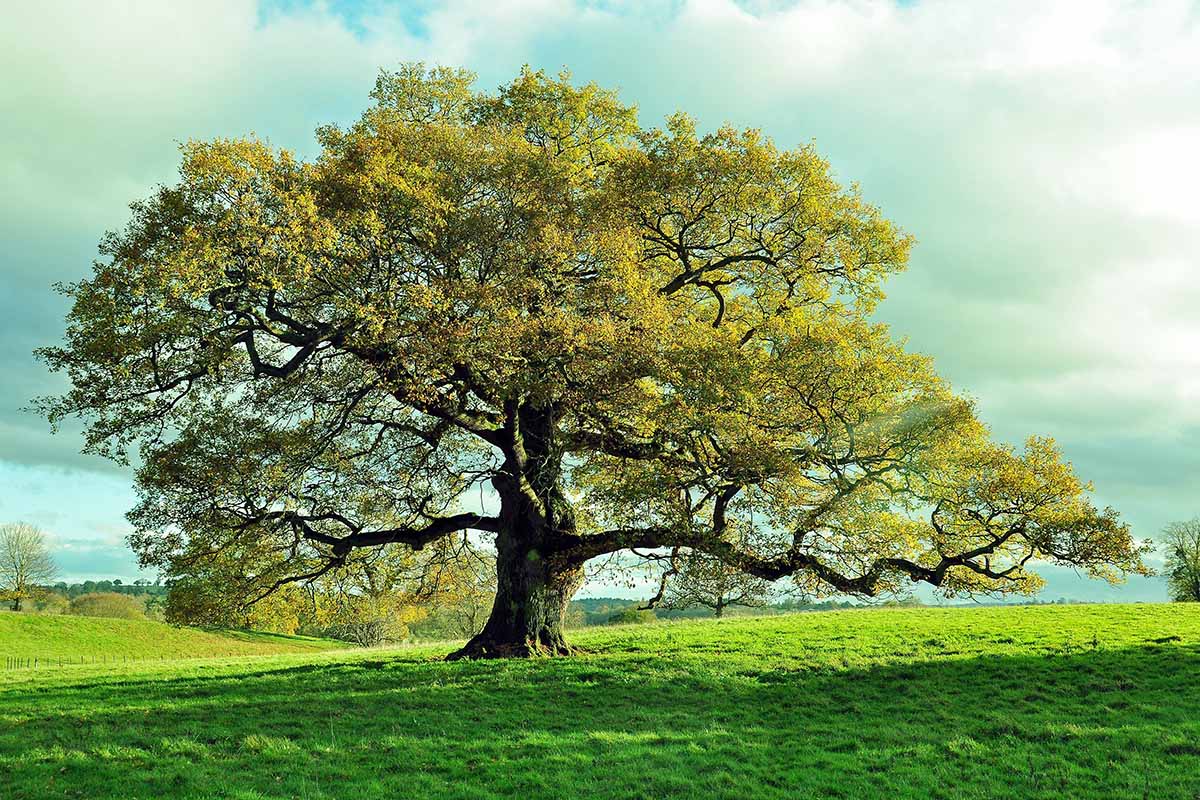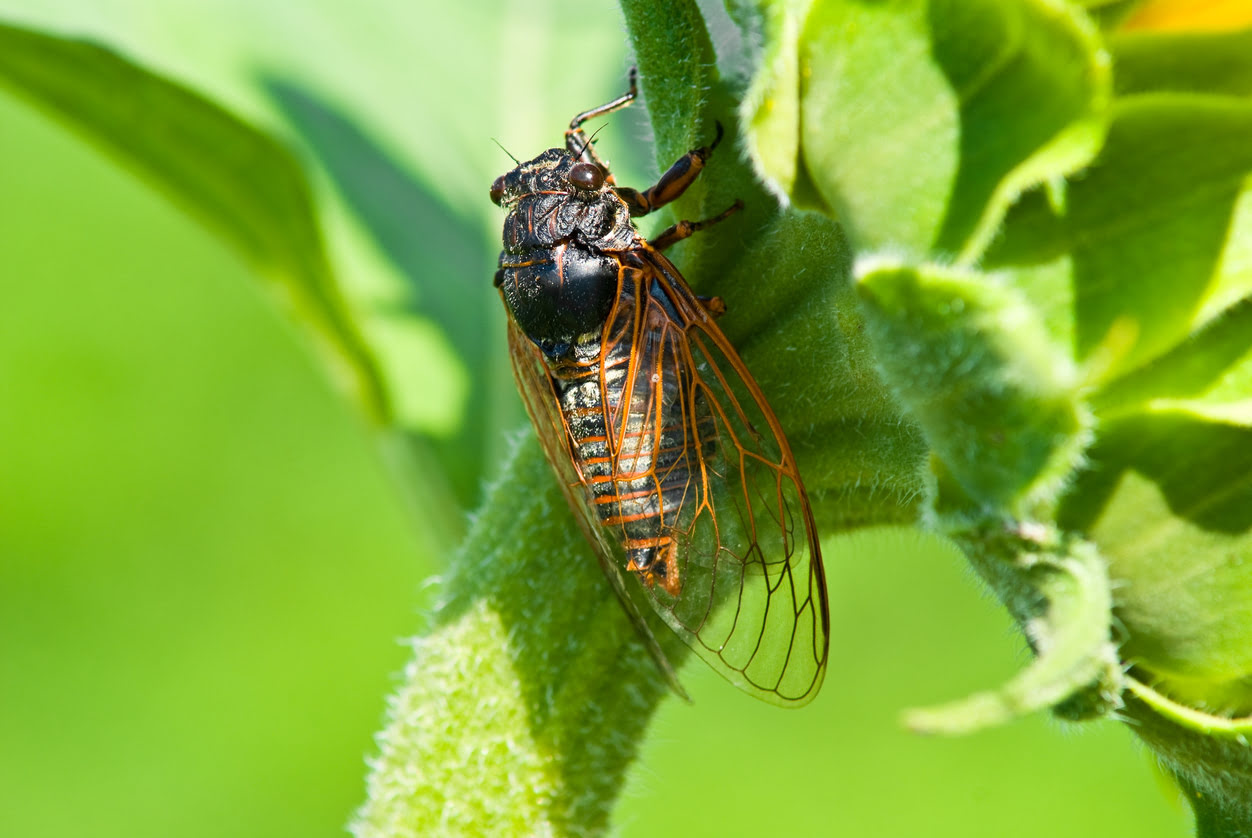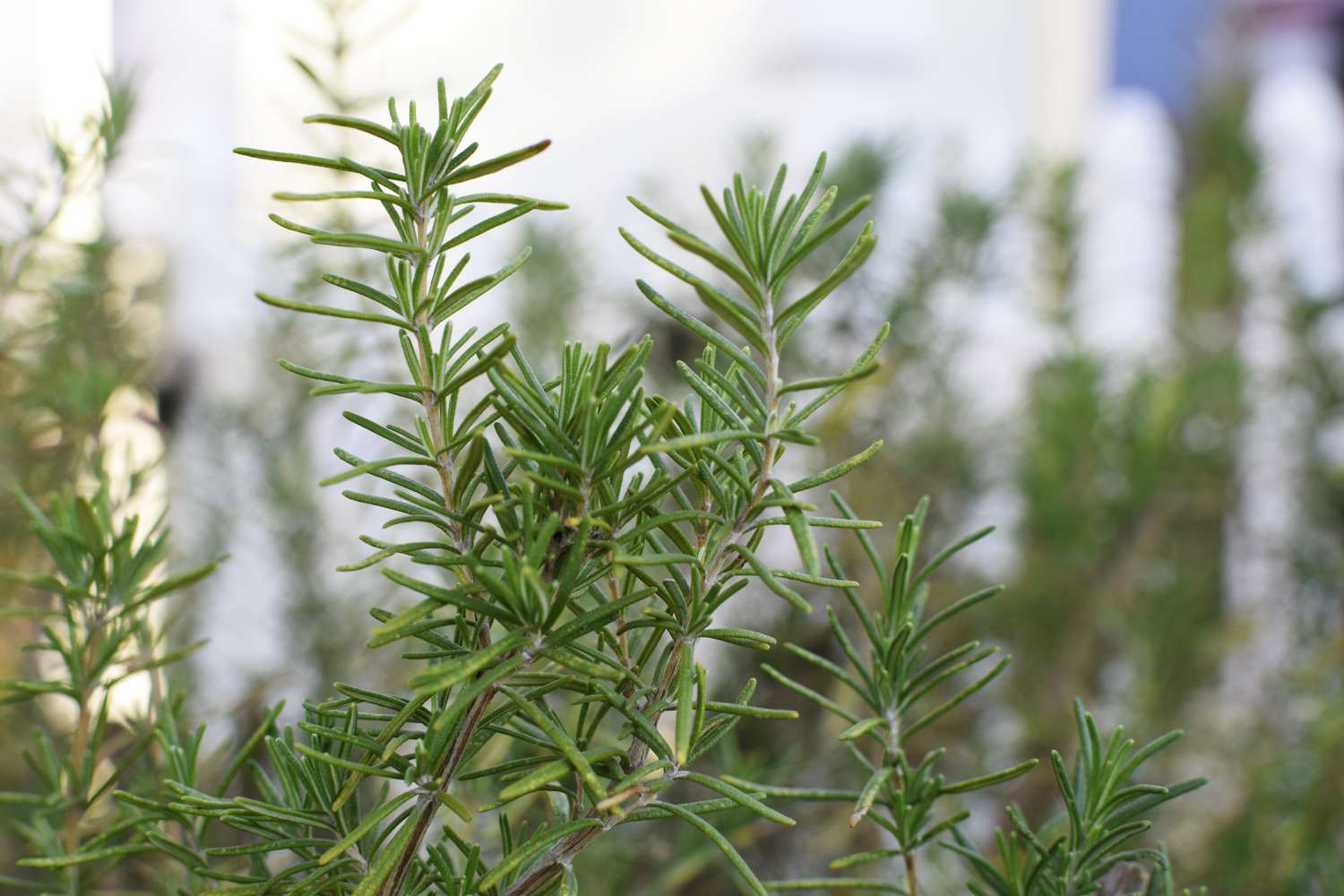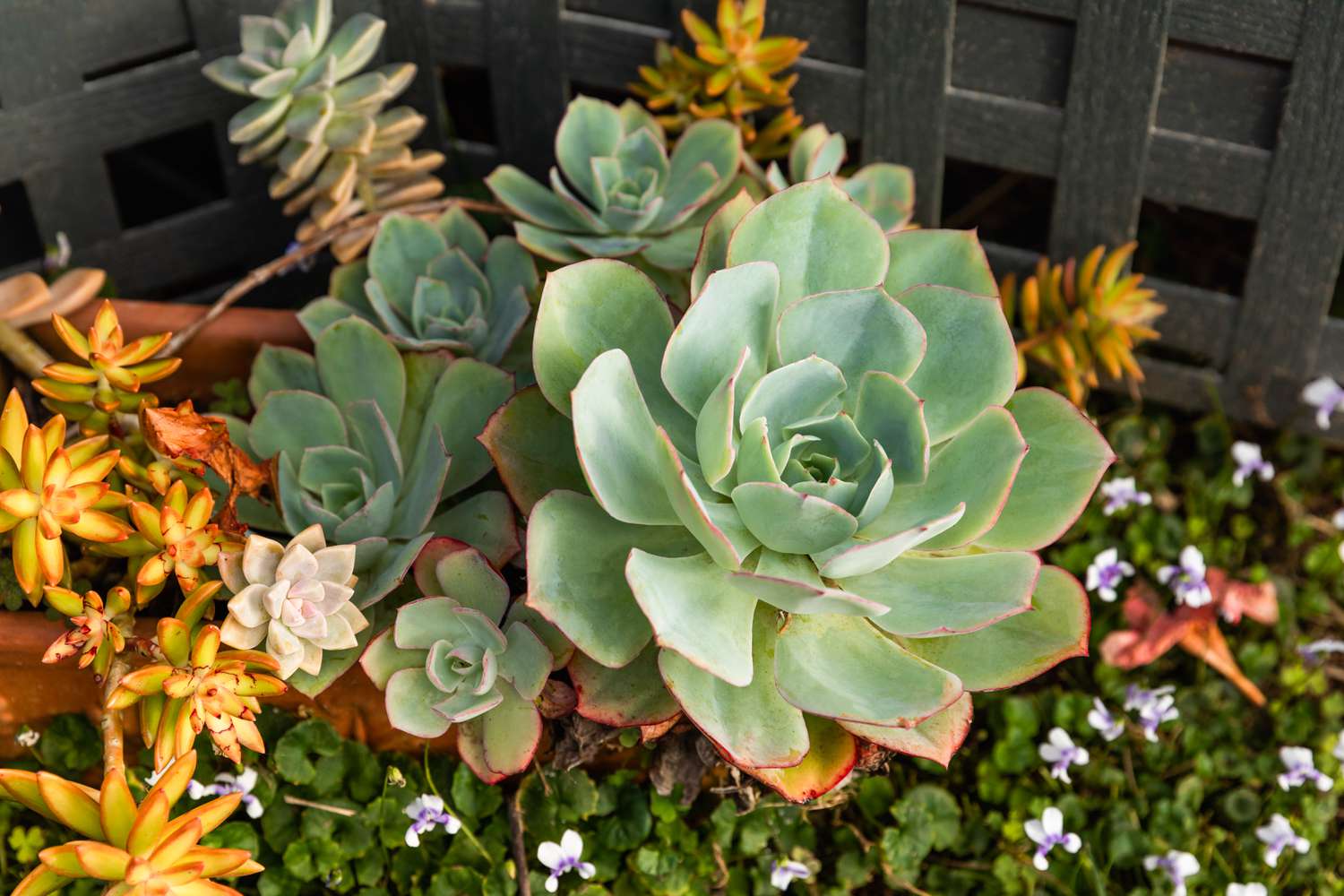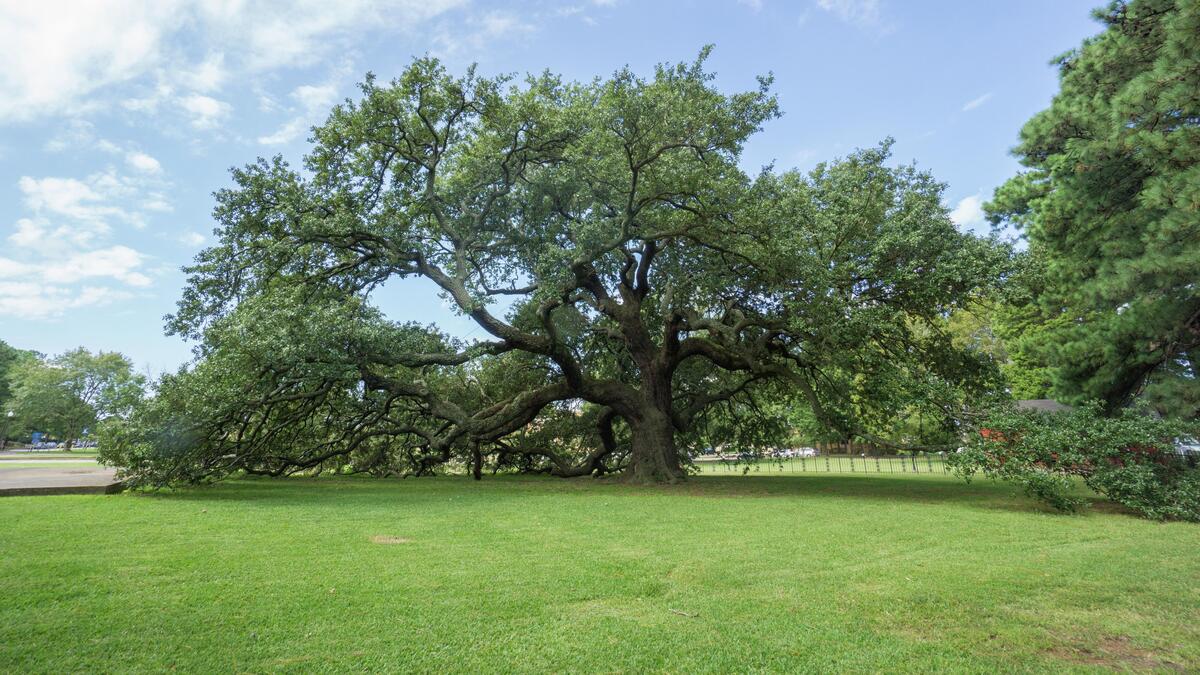Home>Gardening News and Trends>Latest News>How Long Can Oak Trees Live


Latest News
How Long Can Oak Trees Live
Modified: January 22, 2024
Discover the latest news about the impressive lifespan of oak trees and learn how long they can truly live. Stay informed and amazed by nature's wonders!
(Many of the links in this article redirect to a specific reviewed product. Your purchase of these products through affiliate links helps to generate commission for Chicagolandgardening.com, at no extra cost. Learn more)
Table of Contents
Introduction
Oak trees are one of nature’s remarkable creations known for their strength, longevity, and majestic presence. These iconic trees have been a part of our landscapes for centuries, serving as a symbol of strength, wisdom, and resilience. But have you ever wondered just how long oak trees can live? In this article, we will explore the factors that affect the lifespan of oak trees, the species known for their long lifespans, the environmental conditions necessary for their longevity, signs of aging in oak trees, and some of the longest living oak trees on record.
Oak trees belong to the genus Quercus and comprise over 600 species that can be found across the globe. These trees are known for their remarkable adaptability and can thrive in a wide range of habitats, from temperate forests to arid landscapes. Oak trees are considered long-lived, with many reaching several hundred years in age. However, the lifespan varies depending on various factors, including species, environmental conditions, and individual tree health.
Understanding the key factors that influence the lifespan of oak trees is crucial to their conservation and preservation. By gaining insights into the environmental conditions necessary for their longevity, we can create sustainable practices to support the growth and development of these ancient trees. Furthermore, recognizing the signs of aging in oak trees can help us identify and protect these valuable resources.
In the following sections, we will delve deeper into the factors affecting oak tree longevity, the oak tree species known for their long lifespans, environmental conditions necessary for their optimal growth, the signs of aging in oak trees, and some notable examples of the longest living oak trees on record. So, let’s embark on this journey to unravel the mysteries of these remarkable arboreal beings and appreciate the importance of their preservation.
Factors Affecting Oak Tree Lifespan
The lifespan of oak trees is influenced by various factors that contribute to their overall health and longevity. Understanding these factors can help us take better care of these majestic trees and ensure their survival for future generations.
1. Species: Different oak tree species have varying lifespans. Some species, such as the White Oak (Quercus alba) and Live Oak (Quercus virginiana), can live for several hundred years. On the other hand, some oak species have relatively shorter lifespans, ranging from 50 to 100 years. The genetics of the species play a significant role in determining the potential lifespan of an oak tree.
2. Genetics: Within each species, individual oak trees may have different genetic makeup, which can influence their longevity. Some trees may inherit genes that make them more resilient and resistant to diseases and environmental stressors, thus increasing their lifespan.
3. Environmental Conditions: The environmental factors in which oak trees grow significantly impact their lifespan. Adequate sunlight, water availability, and nutrient-rich soil contribute to healthy tree growth. Oak trees thrive in well-drained soils with good air circulation. Climatic conditions, such as temperature, rainfall patterns, and the presence of pests or diseases, also affect their overall health and lifespan.
4. Stressors and Diseases: Oak trees face various stressors and diseases that can impact their lifespan. Drought, flooding, pollution, and attacks from pests or pathogens can weaken the tree’s immune system and lead to mortality. Regular maintenance and proactive measures, such as proper pruning and timely pest control, can mitigate these risks and extend an oak tree’s lifespan.
5. Human Interference: Human activities can both positively and negatively affect oak tree lifespans. Preservation efforts, such as protected conservation areas and sustainable land management practices, can enhance the lifespan of oak trees by maintaining their natural habitats. Conversely, deforestation, urbanization, and improper tree care practices can significantly reduce their lifespan.
6. Tree Health and Management: The overall health and management practices employed for oak trees play a vital role in determining their lifespan. Regular inspections, appropriate pruning techniques, and addressing any signs of disease or decay early on can help extend the life of an oak tree.
By considering these factors and implementing sustainable practices, we can promote the well-being and longevity of oak trees. Preserving these magnificent trees not only contributes to the beauty of our landscapes but also supports the biodiversity that depends on them. So, let’s take responsibility and ensure the protection of these natural wonders for generations to come.
Oak Tree Species with Long Lifespans
While oak trees, in general, are known for their longevity, some species stand out for their exceptionally long lifespans. These species have been able to survive for centuries, witnessing the passing of time and becoming living monuments of history and resilience.
1. White Oak (Quercus alba): The White Oak is one of the most iconic oak tree species known for its longevity. It can live for several hundred years, with some individuals reaching the impressive age of 500 years or more. The sturdy trunk, distinctive bark, and beautiful branching structure make the White Oak a symbol of strength and endurance.
2. Bur Oak (Quercus macrocarpa): The Bur Oak is another oak species renowned for its long lifespan. It is native to North America and can live up to 400 years or more. The Bur Oak’s massive size, deeply ridged bark, and characteristic acorns make it a cherished species in the oak family.
3. Live Oak (Quercus virginiana): The Live Oak, predominantly found in the southern United States, is famous for its longevity and iconic spreading branches that create a canopy of shade. These majestic trees can live for several hundred years, with some specimens estimated to be over 1,000 years old. The Live Oak’s adaptability to coastal regions and its resistance to strong winds and salt spray contribute to its impressive lifespan.
4. English Oak (Quercus robur): The English Oak is an iconic oak species found in Europe, known for its longevity and cultural significance. These trees can live for several hundred years, with some individuals reaching ages exceeding 1,000 years. The English Oak is deeply rooted in folklore and has been revered as a symbol of strength and endurance throughout history.
5. Cork Oak (Quercus suber): The Cork Oak, native to southwestern Europe and northwest Africa, stands out for its ability to produce cork, which is harvested without harming the tree. Beyond its economic value, the Cork Oak is also known for its long lifespan, with some specimens living for over 200 years.
These are just a few examples of oak tree species with remarkable lifespans. Each species has its unique characteristics and significance in various regions of the world. Their ability to withstand the test of time serves as a testament to the enduring power of nature and the importance of protecting these ancient trees.
Environmental Conditions and Oak Tree Longevity
The longevity of oak trees is closely tied to the environmental conditions in which they grow. These majestic trees require specific factors to thrive and reach their full potential in terms of lifespan. Understanding these environmental conditions is essential for the successful cultivation and preservation of oak trees.
1. Sunlight: Oak trees are generally sun-loving species, requiring an adequate amount of sunlight to carry out photosynthesis and produce energy. They thrive in areas with full or partial sunlight exposure, which promotes their growth and overall health. Lack of sunlight can weaken oak trees and reduce their lifespan.
2. Soil Quality: Well-drained soil with good fertility and appropriate moisture levels is crucial for the longevity of oak trees. Inadequate drainage can lead to root rot and other diseases, while nutrient-poor soil can hinder the tree’s growth and weaken its immune system. Maintaining proper soil conditions through regular testing and appropriate amendments can significantly enhance oak tree lifespan.
3. Water Availability: Oak trees require a consistent supply of water throughout their lifespan. While they can tolerate periods of drought, extended dry spells can stress the tree and lead to long-term damage. Adequate irrigation, especially during dry periods, can help oak trees thrive and extend their lifespan.
4. Temperature and Climate: Different oak tree species have their temperature and climatic preferences. Some oak trees thrive in temperate climates, while others are adapted to more arid or tropical conditions. Extreme temperature fluctuations and harsh climates can significantly impact an oak tree’s longevity. Understanding the climatic requirements of specific oak species and selecting appropriate planting locations can help ensure their successful growth and long-term survival.
5. Pests and Diseases: Oak trees are susceptible to various pests, pathogens, and diseases that can negatively affect their lifespan. Insect infestations, fungal infections, and bacterial diseases can weaken a tree’s defenses and leave it vulnerable to mortality. Regular inspections, preventive measures, and timely treatment can help reduce the impact of pests and diseases and extend the lifespan of oak trees.
By providing suitable environmental conditions, we can create a favorable habitat for oak trees to thrive and live long, healthy lives. Proper planning, including selecting the right tree species for a specific region and ensuring appropriate soil, water, and sunlight conditions, plays a vital role in oak tree longevity.
Preserving natural habitats, reducing pollution, and engaging in sustainable land management practices are key to maintaining healthy environmental conditions for oak trees and securing their longevity for generations to come.
Signs of Aging in Oak Trees
As oak trees grow older, they naturally undergo changes that indicate the passage of time and the onset of aging. Recognizing these signs of aging is important for understanding the health and longevity of these magnificent trees. By identifying these signs early on, proper care and management can be undertaken to ensure the continued vitality of aging oak trees.
1. Declining Growth Rates: One of the first signs of aging in oak trees is a decline in growth rates. As trees age, their growth slows down, resulting in shorter annual branch extensions and decreased overall size. This reduced growth is a natural part of the aging process.
2. Thinning Canopy: Mature oak trees may exhibit a thinning canopy, with gaps or sparse foliage in certain areas. This can be attributed to the natural shedding of older branches and reduced leaf production. The thinning canopy allows more sunlight to penetrate the forest floor, benefiting understory vegetation.
3. Increased Branch Dieback: Older oak trees experience an increased occurrence of branch dieback, where branches gradually lose their vitality and die. This can be attributed to a combination of factors, including environmental stress, disease, and natural aging. Regularly inspecting trees and promptly removing dead or dying branches can help maintain the overall health and appearance of aging oaks.
4. Bark Changes: The bark of aging oak trees undergoes noticeable changes. It may become rougher, with deep furrows and cracks, as well as the development of mosses, lichens, and fungi. These changes in bark texture and appearance are normal and do not necessarily indicate a decline in tree health.
5. Hollowing Trunk: Over time, the interior of an oak tree’s trunk may become hollow. As the tree grows older, natural decay processes can cause the heartwood to break down, resulting in a hollow center. While a hollow tree may still remain structurally sound and stable, assessing the potential risk and seeking professional advice is crucial to ensure public safety.
6. Reduced Acorn Production: As oak trees age, the production of acorns tends to decrease. This reduction in reproductive output is a natural part of the aging process and is influenced by factors such as tree health, climate, and genetics. However, even with reduced acorn production, mature oak trees continue to provide invaluable ecosystem benefits and serve as habitats for wildlife.
Recognizing these signs of aging in oak trees can help arborists, land managers, and tree enthusiasts make informed decisions regarding tree care and management. It is essential to engage in proactive measures, such as regular tree inspections, monitoring for signs of disease or decay, and providing appropriate maintenance and support to promote the longevity and well-being of aging oak trees.
Longest Living Oak Trees on Record
Through the ages, some oak trees have stood as living witnesses to centuries of history. These exceptional specimens have managed to survive through the generations, becoming renowned for their remarkable longevity. Here are a few notable examples of some of the longest living oak trees on record:
1. The “Methuselah Oak” – Located in a park in the village of Creglingen, Germany, the Methuselah Oak is estimated to be around 1,000 years old. This ancient oak has withstood the test of time and has become a symbol of endurance and strength in the region.
2. The “Mighty Oak of Basking Ridge” – Situated in Basking Ridge, New Jersey, this oak tree is believed to be over 600 years old. Its impressive size and age make it a cherished landmark in the local community.
3. The “Angel Oak” – Found on Johns Island, South Carolina, the Angel Oak is a visually stunning oak tree estimated to be between 400 and 500 years old. Its massive branches and impressive canopy cover an area of approximately 17,000 square feet, making it a popular tourist attraction.
4. The “Bowthorpe Oak” – Located in Lincolnshire, England, the Bowthorpe Oak is said to be over 1,000 years old. This ancient oak has a circumference of about 13 meters and continues to thrive in its beautiful surroundings.
5. The “Sessile Oak of Glencoe” – This oak tree, located in Glencoe, Scotland, is estimated to be around 500 years old. It stands tall, overlooking the picturesque landscapes of the Scottish Highlands.
These are just a few examples of the longest living oak trees recorded throughout the world. Each tree has its unique story to tell, having witnessed centuries of human existence and natural wonders. Their presence is a testament to the resilience of oak trees and serves as a reminder of the importance of preserving and protecting these ancient living treasures for future generations.
Visiting and learning about these majestic trees not only allows us to appreciate their beauty and significance but also encourages us to foster a deeper connection with nature and the incredible lifespans of these iconic oak species.
Importance and Conservation of Old Oak Trees
Old oak trees hold immense ecological, cultural, and historical value, making their conservation crucial for the preservation of biodiversity and our connection to the past. Here are some reasons why old oak trees are important and why their conservation is essential:
1. Biodiversity Hotspots: Old oak trees provide vital habitats for a wide range of plant and animal species. Their large branches, cavities, and decaying wood support diverse ecosystems, serving as homes, nesting sites, and food sources for birds, insects, mammals, and fungi. Preserving old oak trees helps to safeguard this rich biodiversity.
2. Carbon Storage and Climate Regulation: Older trees have greater carbon storage capacity than younger ones. Oak trees accumulate carbon over their long lifespans, aiding in the mitigation of climate change by reducing greenhouse gas levels in the atmosphere. Conserving old oak trees supports climate regulation and contributes to the overall health of our planet.
3. Cultural and Historical Significance: Old oak trees have significant cultural and historical value, representing our connections to the past. Many ancient oaks are associated with mythologies, folklore, and traditional practices. They have witnessed countless generations, serving as witnesses to the passage of time and important historical events. Preserving these trees helps maintain our cultural and historical heritage.
4. Landscape Aesthetics and Identity: Mature oak trees contribute to the beauty and character of our landscapes. Their majestic presence, sprawling canopies, and gnarled branches have inspired artists, poets, and writers throughout history. Conserving old oak trees helps to maintain the visual diversity and unique identity of our natural and cultural landscapes.
5. Seed Dispersal and Regeneration: Old oak trees play a critical role in the reproduction and regeneration of forest ecosystems. They produce acorns, which serve as a source of food for wildlife and facilitate seed dispersal. The germination and growth of new oak trees contribute to the rejuvenation and continuity of forests.
Conserving old oak trees requires a multi-faceted approach. It involves implementing sustainable land management practices, protecting old-growth forests, and promoting tree care and maintenance. It also necessitates raising awareness about the importance of old oak trees among the general public and engaging in community conservation efforts.
By prioritizing the conservation of old oak trees, we can protect biodiversity, preserve cultural heritage, mitigate climate change, and maintain the aesthetic and ecological integrity of our landscapes. Let us value and act upon the irreplaceable contributions that old oak trees make to our world.
Conclusion
Oak trees, with their remarkable longevity and ecological significance, hold a special place in our natural world. From the majestic White Oak to the resilient Live Oak, these towering giants have played an integral role in shaping landscapes, supporting biodiversity, and connecting us to our cultural and historical roots. Understanding the factors that affect their lifespan, the importance of environmental conditions, recognizing signs of aging, and conserving old oak trees are key to their preservation for future generations.
By providing suitable environmental conditions, such as sunlight, well-drained soil, and water availability, we can create a habitat where oak trees can thrive and live out their potential lifespans. Regular maintenance, including timely pruning and addressing signs of disease or decay, can contribute to their overall health and longevity. Moreover, the conservation of old oak trees is essential for preserving biodiversity, mitigating climate change, and maintaining our cultural and historical heritage.
As stewards of the natural world, it is our responsibility to protect and care for these ancient arboreal wonders. By valuing and conserving old oak trees, we can ensure the survival of these living monuments, allowing future generations to witness their beauty, experience their shade, and benefit from the ecosystems they support.
Let us embrace the wisdom and strength that oak trees embody and take proactive measures to sustain their existence. Whether through sustainable land management practices, community conservation efforts, or simply appreciating the beauty of these trees in our everyday lives, we can make a meaningful impact in preserving these magnificent trees for generations to come.

